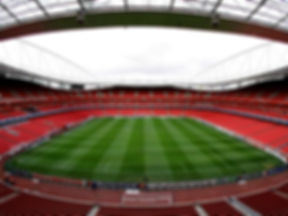
Referee Articles
Eye contact is essential !
Eye contact is when the referee and the assistant look at each other at the same time to make a decision. In other words it is a form of non verbal communication which greatly affects referee performance because it provides valuable technical, disciplinary and emotional information.
Usually without being aware of it, referees check each other’s eyes for positive or negative signs regarding situations in the game.
The continuity and interpretation from eye contact varies depending on each situation.
By Jose Borda, Revista Arbitros

Important skill
Improving eye contact is not difficult to achieve, however maintaining regular communication is the most important skill occurring between the referee and assistant referees. This ability is based on effective eye contact and is essential to maintaining teamwork and credibility. It also helps referees feel part of an official’s crew and to develop camaraderie. A slight change in eye direction may indicate to the referee which team must take the restart, while a stare can indicate a question or uncertainty about a particular action.
Applications
On throw-ins, goal kicks, corner kicks, fouls, and violations outside the referee’s view or where the view is obstructed, eye contact is important. This also applies when a foul is committed outside the penalty area, especially on the edge of it, or within the area but outside referee’s sight line. If there is uncertainty, disciplined eye contact is necessary because it serves to synchronize the assistant and referee’s position and decision. This helps when the referee decides to apply advantage and is essential for offside because the referee should look twice or more at the assistant in order to verify that an attacker should be penalized.
Proper contact
Many associations are increasingly training their referees to maintain proper visual contact with their assistants and vice versa, all in the effort to provide better referee support. However, the point here is not just eye contact, but how to make appropriate and effective eye contact. While for many people this is as natural as breathing, for others it is difficult. Although there are techniques for handling it, the best one involves each referee developing what works best for him/her. Here are some beneficial ones which can help.
Useful tips
Eye contact should last three to five seconds at a time, which is about right. It is common that after a few moments of intense eye contact to break off when the referee makes a decision. Visual communication with the assistant can show players that the decision was a proper one, because they will not notice. Additionally, a referee must take into account that when you are happy, excited or make a mistake, the pupils dilate in an observable way. Finally, if you blink a lot it means that you are in the midst of a thought or decision making situation you have not resolved. For this reason it is important for referees to act as if they always know what they are going to do.




